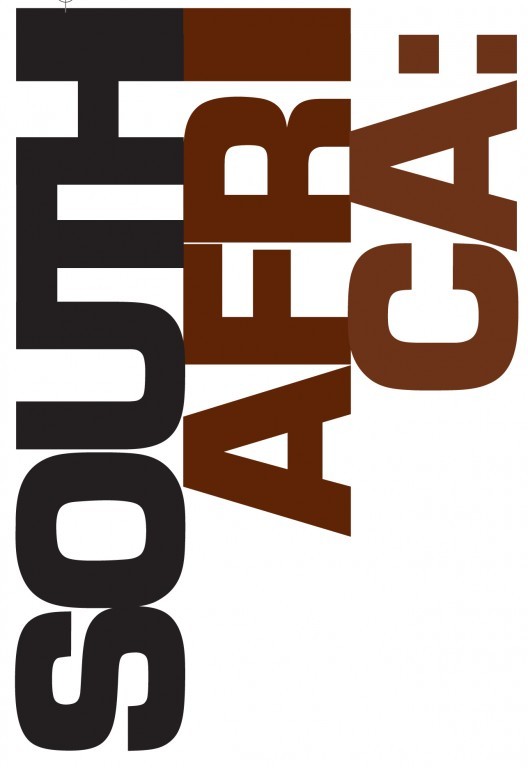First Published in

All week long, listening to people wherever they happened to stand between optimism and pessimism, I had the sense that South Africans did not fully comprehend how they astonish the world. These last ten years the world has witnessed something miraculous in South Africa, a retreat from retribution, a willingness to confess, a willingness to forgive.
At the Design Indaba banquet, we were waiting for a serving of ostrich, as the prima ballerina from Walt Disney's Fantasia pirouetted through my imagination. "Oh, thank God for Mandela", a white woman of middle age said to me. She did not need to elaborate.
I had come from California to take some measure of the people who had lived the miracle. I had already seen the postcards and the photographs of Cape Town in the travel magazines. I knew the city's spectacular geographical luck.
No, I did not want to take a cable car up to Table Mountain. No, I was not interested in a helicopter ride over the city. No, I was not even interested in the boat tour to Robben Island. It was the neighbourhoods I told my hosts I wanted to see. Every quarter.
I travelled behind my brown face. Nowhere did anyone approach to beg or question or threaten or wonder about my curiosity. I saw neighbourhoods that reminded me of Malibu or Nice. I saw shanty-towns that reminded me of Mexico City and Bangkok. I saw gated walls and shopping centres and boys playing football alongside the freeway.
"One wonders, of course, about the young men and their anger. How much time South Africa has to repair the inequity?" A South African academic said that to me one afternoon as we sped along the roadway in an air-conditioned Audi.
And then Design Indaba 8 began.
The Cape Town Convention Centre belongs within the International Style - our post-modern freedom from a specific address. Once inside the auditorium, I might have been in Los Angeles or Melbourne. In answer to my surprise about the audience, a white South African journalist confided to me: "You'd never find an audience this white in Johannesburg. Cape Town is such a segregated city; Johannesburg is the edgier place."
The audience seemed to me wonderfully curious, hungry for everything the parade of presenters from all over the world had come to tell them: about Italian motorcycles, and London department store windows, Tokyo graphics, and American book jackets.
Brazilian presenters spoke of mimicking the poor and the indigenous populations with their designs, and of designing for the great, ugly city of today, Sao Paulo. Listening to them, I was struck by the similarities between Brazil and South Africa - each a country of epic geography and racial complexity; each facing stunning poverty and possibility. Maybe this country, which names itself by its geographical relationship to the north, would do better to look west, toward South America.
During the tea breaks, I only heard English. I saw youth, mainly, not middle age. I saw men and women easy in their youth, amiable, friendly. These young women and men have been bequeathed an astonishing national constitution, a constitution that is all about relationship, the implicit freedom to sit beside, the freedom to work alongside, the freedom to befriend, the freedom to love, even love homosexually.
From the stage at Design Indaba 8, one heard about fabrics and posters and hotel designs. There was little said about segregation by class and religion and race within a city like Cape Town.
Moving between the presentations inside the Convention Centre and the city outside, I started thinking about Berlin (Berlin, the dark star is never far from my thoughts these days. The generation of World War II is dying). A remarkable debate in Germany in recent years has concerned memory and architecture: How should a shameful past be remembered?
Berlin is, at the moment, the world's most important city of design precisely because of the willingness of a new generation to employ design to re-frame historical possibility. Do South African designers have anything to learn from Germany? Could Johannesburg become the next Berlin?
I visited the train station very early one morning. I could not say exactly what I was looking for. I was in South Africa so briefly; I knew that most of the country's secrets would remain hidden from my quick glance. Perhaps I only wanted to see South Africa, rushing to work, in an unguarded moment. I had not expected to feel, so often in the brown city, as though Cape Town were on the Pacific, rather than the Atlantic.
I had not expected so many mosques. One designer who had grown up in Cape Town and now lives in Europe confessed to me that he still misses hearing the call to morning prayer with his coffee. But, my driver (a Malay Muslim) observed, as he drove me along the charming streets of Bo-Kaap, "This old neighbourhood is changing. Non-Muslims are moving in, there are even business offices."
It was this same driver who, later that afternoon, remarked on the influx of Europeans buying second homes overlooking the sea and the inflation of real estate prices in their wake. The world, or some leisured portion of it, wants a piece of South Africa.
My hotel room overlooked the harbour. All night, freighters were loaded or unloaded. Sailors for centuries have complicated this coastline with their passage. Perhaps today's vacationers and tourists will achieve the same complication.
"There are children now in South Africa who have no living memory of apartheid," a father of two children said to me. "They need to be reminded of the word in their classrooms." His sons attend a prominent Anglican school.
The audience at Design Indaba 8 would not need to be told what apartheid had meant. The men and women in the audience were old enough to have memories of another time, "before democracy." I watched them, and wondered at their interest in what the designers from the great world had to tell them.
And so my week passed, largely within my own head. Until finally, my last day in Cape Town, a few hours before I was scheduled to leave for the airport, I found myself in a glass room, perched high above an exhibit hall at the Convention Centre. In the room, which was serving as a makeshift radio studio, I was waiting to be interviewed on a call-in programme. There were five women with me - three black, one white, and one brown.
Music boomed from the floor of the Convention Hall, where a fashion show was in progress. We could see male and female models in bathing suits, parading up and down a runway. The models had their Milanese zombie-strut down pat.
The women in the room stretched their necks like curious birds to peer down at the runway. "Look at that one," one of them shrieked, laughing. "Oh, honey, love your shoulders! Been working out, huh?"
None of the women remarked on the swimsuits, presumably designed and manufactured in South Africa. It was South African bodies the women saw and so easily admired. Black swooned over white. White swooned over black. The brown woman discreetly watched me; then smiled at my Californian curiosity.
I returned to America and told friends that I had been to some great country in the world that did not yet exist. For so it seems to me - some great possibility, a Good Hope is only now being charted.
Here is a task for the young designers - the task of designing the way South Africa will experience itself: the spaces where people will work alongside one another and the jewellery and swimsuits with which seductions will be accomplished and the tables and chairs, the circles and rectangles, and most especially the uses of colour in a country that is, at last, free to melt.








